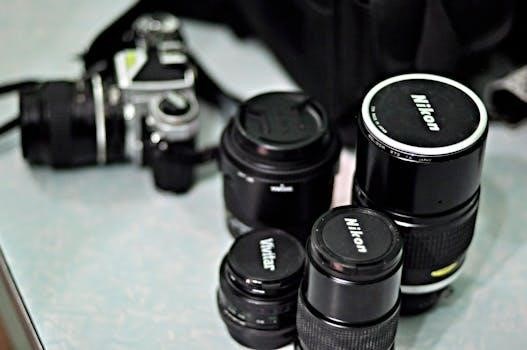
The Nikon FE is a compact 35mm SLR camera renowned for its aperture-priority automatic exposure. It offers interchangeable focusing screens and a motor drive option, making it a versatile choice for photographers.
Overview of the Nikon FE
The Nikon FE, a classic 35mm single-lens reflex camera, was first introduced in 1978. It features a vertically traveling metal blade focal plane shutter, offering speeds from 8 seconds to 1/1000th of a second, and also includes a bulb mode for extended exposures. The camera supports manual focus lenses, giving photographers significant control over composition. It has a film advance lever and a frame counter to track your shots. The FE’s design prioritizes ease of use, making it a favorite among film enthusiasts.
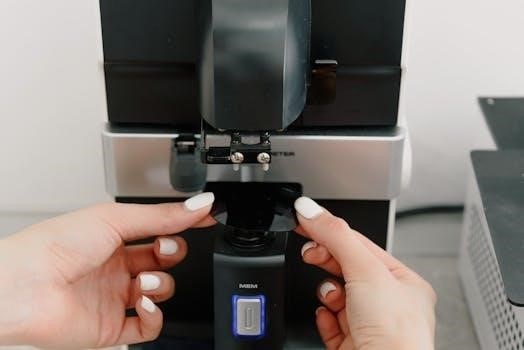
Camera Body and Features
The Nikon FE boasts a robust design with a transparent green needle to indicate shutter speed. It features interchangeable focusing screens and a standard hot shoe for flash units.
Shutter Speed Range and Controls
The Nikon FE offers a versatile shutter speed range, from 8 seconds to 1/1000th of a second, alongside a bulb mode for extended exposures. The shutter speed dial features a transparent green needle, showing the selected speed, including ‘AUTO’ and manual settings. This allows for flexible control over motion and depth of field, accommodating various lighting conditions and creative photographic needs. The camera’s design prioritizes ease of access for the user to quickly adjust and select the perfect speed.
Focusing Screens
The Nikon FE utilizes interchangeable focusing screens, offering photographers customization for various shooting styles. It accepts the standard K screen, along with the E and B screens, allowing for tailored focusing precision. Furthermore, newer K2, E2, and B2 screens from the FE2 can be used for a brighter viewfinder, requiring a minor exposure compensation. The K3 screen from the FM3a may also be compatible. These options provide greater control and clarity while composing and focusing.
Film Advance and Frame Counter
The Nikon FE features a film advance lever that moves the film to the next frame after each shot. The frame counter, which stops at 36, keeps track of the number of exposures made, but it is possible to continue shooting beyond this number. The film speed is set manually on a dial and the film is loaded by threading it into the take-up spool. The camera allows shooting to start on the second frame after the back is closed.
Exposure Lock Functionality
The Nikon FE’s exposure can be locked by pushing the self-timer lever towards the lens. Unlike the FE2, the FE does not indicate that the exposure is locked; the meter continues to read the current light. However, photographers can use this function for the Zone System, noting the needle position to understand subject placement. The FE is not like newer cameras with digital circuitry, its analog design allows for a unique way to use exposure lock.
Exposure and Metering
The Nikon FE provides aperture-priority automatic exposure, along with a manual mode. Its metering system operates primarily within the center circle of the viewfinder, allowing for precise adjustments.
Aperture-Priority Automatic Exposure
The Nikon FE excels with its aperture-priority automatic exposure mode, enabling photographers to select their desired aperture while the camera automatically sets the appropriate shutter speed. This feature allows for creative control over depth of field while ensuring proper exposure. The camera’s internal circuitry, being analog, provides a wide range of automatic exposure times, even for long night shots, without the need for manual timekeeping. This mode simplifies shooting, especially in dynamic lighting conditions.
Manual Exposure Mode
In addition to aperture-priority, the Nikon FE offers a full manual exposure mode, granting photographers complete command over both aperture and shutter speed. This allows for precise control and is beneficial for specific creative effects or challenging lighting scenarios. The transparent green needle displays the selected shutter speed, aiding in manual adjustments, while the black meter needle shows light levels. This mode allows for zone system utilization, offering an advantage for composing shots with specific exposure zones.
Metering System
The Nikon FE employs a center-weighted metering system, primarily measuring light within the large circle visible in the viewfinder. This system allows photographers to base their exposure readings on the subject at the center of the frame. The meter needle indicates metered values and automatically selected speeds. If the light is uneven, the user can lock the exposure by using the self-timer lever, recompose, and shoot. The meter continues to read current light even after engaging the exposure lock, allowing zone system techniques.
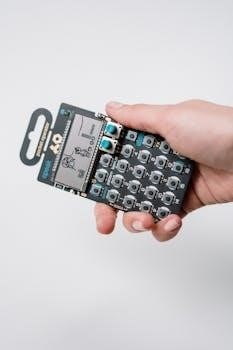
Flash Photography
The Nikon FE features a hot shoe for flash units, eliminating sync cords. It’s compatible with Nikon Speedlights, offering a ready light in the viewfinder. The camera syncs at 1/125th in auto mode.
Hot Shoe Compatibility
The Nikon FE features a built-in hot shoe, allowing for seamless operation with compatible flash units. This eliminates the need for a sync cord when using flashes equipped with an ISO-type hot-shoe mount, such as the Nikon Speedlight Units SB-4, SB-8E, SB-9, and SB-10. However, it’s important to note that the hot shoe lacks the extra hole for locking pins found on newer flashes, which can sometimes cause shoe-mounted flash units to back out. The FE does not support TTL flash functionality.
Flash Synchronization
The Nikon FE synchronizes with flash units at a speed of 1/125th of a second when set to “AUTO” mode. This ensures proper flash exposure. When a flash is attached and activated, the camera automatically switches to this speed, even while the flash is recycling. If you desire slow sync, you can manually set the desired shutter speed on the dial while observing the meter to set the appropriate fill ratio. However, the FE does not offer TTL flash capabilities and lacks a specialized M-sync mode for older flashbulbs.
Using Nikon Speedlight Units
The Nikon FE is compatible with various Nikon Speedlight units, such as the SB-4, SB-8E, SB-9, and SB-10. These units connect via the hot shoe, eliminating the need for a sync cord. A ready light in the viewfinder indicates when the flash is charged. When using a flash, the FE automatically sets the shutter speed to 1/125th of a second. However, note that the hot shoe lacks locking pins, so shoe-mounted flashes can sometimes back out. Some flashes like the SB-22 may go to sleep, requiring a frame to be shot to wake it up.
Power and Batteries
The Nikon FE utilizes A76 or LR44 button cell batteries. These batteries power the camera’s metering system and shutter. A battery check lever and light are included for testing battery status.
Battery Type and Usage
The Nikon FE operates using two A76 or LR44 button cell batteries. These small batteries are easily replaceable and widely available. They provide power for the camera’s light meter and electronic shutter functions. The batteries disconnect completely when the meter is off, conserving their charge. It is advisable to carry spare batteries, as the camera will lock the mirror if the voltage drops too low, requiring a manual reset using the M90 setting on the shutter dial.
Battery Check Function
The Nikon FE includes a battery check function, indicated by a lever and light. When the lever is activated, the light illuminates if the batteries have sufficient power. The check light will stop working before the camera does, providing a warning. However, the camera can still function even after the check light stops, though with reduced functionality. When the batteries reach approximately 2.8V, the mirror locks up after exposure, signaling the need for replacement. Ensure correct installation of the cells for proper function.
Advanced Features
The Nikon FE offers advanced features such as a multiple exposure lever, self-timer functionality, and long exposure capabilities. These features enhance creative control and versatility for photographers using the camera.
Multiple Exposure Lever
The multiple exposure lever, located near the strap lug, allows for creating images with superimposed elements. To use it, hold the lever coaxial with the wind crank while cocking the shutter. This prevents film advancement, allowing you to expose the same frame multiple times. This feature enhances creativity, enabling unique and artistic effects by combining several images into a single photograph. The lever must be manually held during the film advance to properly utilize the multiple exposure function on the FE.
Self-Timer Functionality
The Nikon FE’s self-timer lever, identified by a white line, also serves as a mirror lock-up mechanism. When engaged, the self-timer automatically flips up the mirror and stops down the lens before the exposure. This feature is particularly useful for reducing camera shake during long exposures or when using slow shutter speeds. The self-timer will count down approximately ten seconds before the exposure. By using the self-timer, you can eliminate camera shake and have sufficient time to get into the photo.
Long Exposure Capabilities
The Nikon FE excels in long exposure photography due to its analog circuitry, which allows for automatic metering and timed exposures, without the need for manual timing. It meters and times exposures automatically. When using the self-timer for long exposures, the camera measures and locks the exposure, flips up the mirror, counts down, and then performs the time exposure. The duration of the exposure can vary based on temperature and the amount of light. The camera will even calculate the exposure time for a wide-open lens.
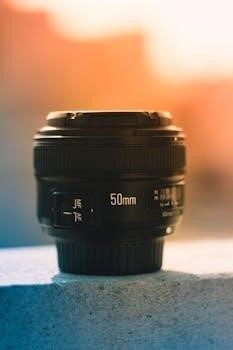
Maintenance and Troubleshooting
When the batteries drain to 2.8V, the mirror stays locked up after the exposure. Spin the shutter dial to M90 to get the mirror back down and replace the batteries.
Mirror Lock-Up and Related Issues
The Nikon FE’s self-timer automatically flips up the mirror at the start of the self-timer interval, effectively providing mirror lock-up. However, the mirror cannot be locked up permanently. The FE’s internal analog circuitry allows it to handle long exposures without hard limits. If the mirror stays locked up after exposure, it indicates low battery power, and replacing the batteries will fix the issue.
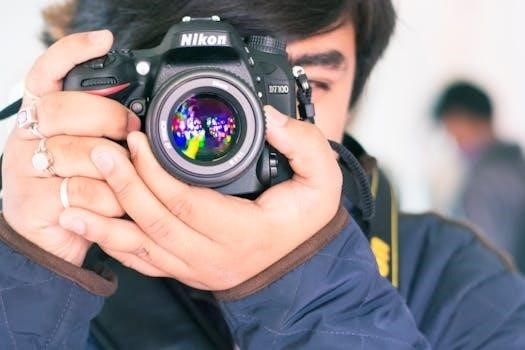
Manuals and Resources
User manuals for the Nikon FE are available online, often in PDF format. Repair manuals also exist, offering detailed information for maintenance and troubleshooting. These resources aid users in understanding the camera’s functions.
Availability of User Manuals
The Nikon FE instruction manual is readily accessible online, often in PDF format, catering to users seeking digital copies. These manuals provide comprehensive guidance on camera operations, settings, and features. Many websites offer these manuals for download, sometimes requiring a small fee to support their hosting costs and maintenance. Additionally, some vendors provide high-quality printed and bound versions for those who prefer a physical copy, ensuring a convenient reference for all users. It’s important to verify the source when downloading digital manuals to ensure accuracy and completeness.
Repair Manual Information
Repair manuals for the Nikon FE are also available, often as exploded parts diagrams, aiding in understanding the camera’s internal mechanics. These resources are beneficial for individuals looking to perform maintenance or repairs. However, they are not always free and may require payment for download, and it’s important to find reputable sources. These manuals can sometimes be found alongside other repair guides for similar Nikon models. Some online forums and communities may also offer useful insights. Always use caution when conducting repairs to ensure no further damage is caused.